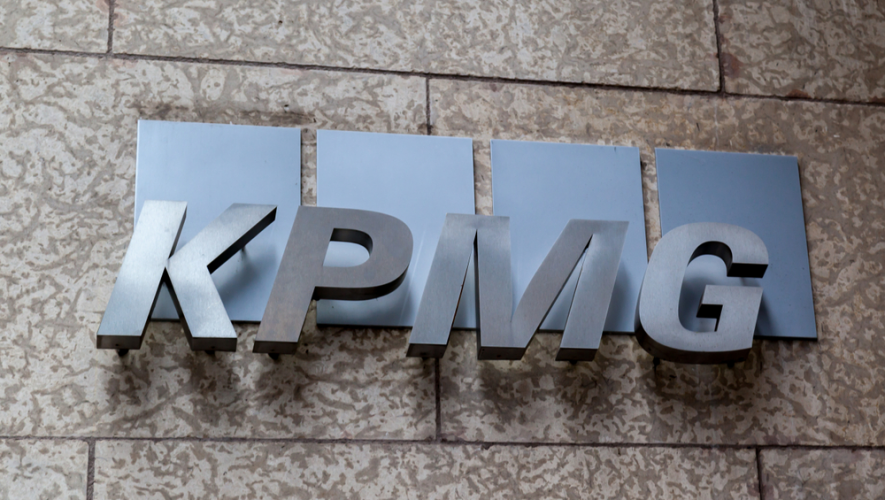The PCAOB should be dropping the first batch of 2021 inspection reports soon, and as an appetizer before the main course, the audit cops issued a report Dec. 8 on how the 141 annually and triennially inspected firms did overall during the most recent inspection cycle, in which portions of 690 audits were reviewed. Annnnd it wasn’t good:
We observed an increase in the percentage of engagements reviewed with at least one “comment form” (the initial communication to audit firms of observed deficiencies from our inspections, which generally result in Part I.A or Part I.B inspection observations). Part I.A of the individual audit firm’s inspection report discusses deficiencies, if any, that were of such significance that we believe the audit firm, at the time it issued its audit report(s), had not obtained sufficient appropriate audit evidence to support its opinion on the public company’s financial statements and/or internal control over financial reporting. In Part I.B of our inspection reports, we provide observations regarding instances of noncompliance with PCAOB standards or rules that do not relate directly to the sufficiency or appropriateness of evidence the audit firm obtained to support its opinion(s), such as critical audit matters, Form AP, and certain independence related deficiencies.
We expect approximately 33% of the audits we reviewed will have one or more deficiencies that will be discussed in Part I.A of the individual audit firm’s inspection reports, up from 29% in 2020. In addition, we expect that approximately 40% of the audits we reviewed will have one or more deficiencies discussed in Part I.B of the individual firm’s inspection reports, up from 26% in 2020. Some audits have both Part I.A and Part I.B deficiencies, such that we expect that approximately 55% of the engagements we reviewed will have one or more Part I.A and/or Part I.B deficiencies, compared to 44% in 2020.
Those observations prompted this response from PCAOB Chair Erica Williams: “Higher deficiency rates in 2021, coupled with the fact that the PCAOB is also seeing an increase in comment forms for 2022, are a warning signal that the audit profession needs to sharpen its focus on improving audit quality and protecting investors. The PCAOB will continue our work to increase audit quality by modernizing our standards, enhancing our inspections, and strengthening our enforcement.”
It just so happens those three things in her last comment are the PCAOB’s top three goals in its recently approved five-year strategic plan.
2021 was the second straight year in which inspections were done remotely, and after the PCAOB last year released the 2020 inspection reports for the largest firms that are inspected annually, we heard gripes from some people that the reason why PwC had a nearly flawless inspection report and why the other Big 4 firms showed year-over-year improvements in audit quality was because inspections weren’t being done in-person at the firms because of the pandemic. And who knows, maybe there was some truth to that. The PCAOB had done very few remote inspections before COVID so maybe inspectors weren’t able to be as nitpicky as they would have been if they were on-site. But with a year of remote inspections under their belt, the PCAOB hinted that inspectors were picking nits more during the 2021 inspection cycle, which probably wasn’t good news to firms that are already understaffed and auditors who are already overworked—a recipe for disaster (hence all the mistakes inspectors found).
The PCAOB said it had two main objectives it wanted to accomplish during the most recent inspection cycle:
First, we aimed to continue a rigorous program of inspections, including responding to the financial reporting and audit risks arising from the effects of the COVID-19 pandemic. Most of the audits that we inspected in 2021 involved the 2020 financial information of public companies with fiscal years ending in December 2020. Thus, our inspectors had an opportunity to assess the impact of the COVID-19 pandemic—which was declared a pandemic by the World Health Organization in March 2020—on auditing practices.
Second, we aimed to increase the overall unpredictability of our inspections by including a higher percentage of random selections and non-traditional focus areas (considering the widespread impact the COVID-19 pandemic had on the planning and performance of audits). We also continued our emphasis on inspecting the audits of larger public companies, including the Fortune 100, given their complexity and inherently greater impact of those public companies and their audits on investors.
We’d love to know the names of those Fortune 100 companies in their auditor’s inspection reports, but the PCAOB doesn’t identify them—and probably never will (to not embarrass the companies and/or the auditors)—instead referring to them as Issuer A, Issuer B, and so forth. But at least the PCAOB publicly releases the firms’ inspection reports, unlike its Canadian counterparts.
The PCAOB also said it selected audits for review in sectors and specific industries experiencing particularly significant disruptions or financial reporting risks during the COVID-19 pandemic:
When selecting individual areas of audits to review, we also focused on certain financial statement estimates and other reporting matters that have been particularly affected by the pandemic, such as impairment, going concern assessment, expected credit losses (“CECL”), and the increased risk of fraud.
We also significantly increased the percentage of audits we selected randomly, especially for the largest audit firms, as the effects of COVID-19 were unpredictable. We also selected more nontraditional focus areas for inspection, again in part to measure the effects of COVID-19 on auditing. Non-traditional focus areas are financial statement areas that are typically less complex and more routine in nature. Examples of non-traditional focus areas selected for review in 2021 included cash and cash equivalents, deposit liabilities, debts, accruals, and foreign currency translations.
No matter what curveballs the PCAOB tried to throw at firms during its 2021 audit inspections, one thing stood out: firms keep making the same ol’ mistakes they always make year after year after year. Here are a handful:
- Auditors didn’t sufficiently evaluate whether controls with a review element selected for testing operated at a level of precision sufficient to prevent or detect material misstatements.
- Auditors didn’t identify and test controls relevant to the assessed risk of material misstatement.
- Auditors didn’t evaluate whether the performance obligations were satisfied, as required to recognize revenue.
- Auditors didn’t perform any procedures to test or, in the alternative, identify and test any controls over, the public company produced information that the auditor used in its substantive testing of revenue.
- Auditors didn’t test, or didn’t identify and test any controls over, the accuracy and completeness of data or reports produced by the public company and used in the auditors’ substantive procedures to test the cost of inventory or in their evaluation of the reasonableness of inventory reserves recorded at year-end.
Hopefully the PCAOB doesn’t release a big pile of 2021 inspection reports on the Friday before Christmas like it did in 2012. That was bogus.




So? I’m not impressed with the quality of PCAOB inspections or standards.
The PCAOB has had 20 years to “fix” auditing. Did it: write audit programs for CPA firms to follow? Did it rule many financial statement items like: asset fair value and derivatives unauditable? Did it go to the FTC or anti-trust division of the Justice Department and break up the “Big Four” into the “Dirty Dozen”? Is it subject to the “revolving door” like other federal regulatory agencies? Have its better inspectors quit and formed their own CPA firm to do audits? Think how good it will be! Any SEC registrant hiring this new firm will get free audits! How? SInce the new firm’s audits will reduce investors risk, an SEC registrant hiring the new firm will have its stock price rise relative to other SEC registrants. If you believe this, I have a bridge over the East River to sell you.
I propose we create a new entity to inspect the activities of the PCAOB. We could call it the Public Company Accounting Oversight Board Oversight Board–the PCAOBOB, or Bob for short.
They could follow the PCAOB inspectors around and ask questions like: So what would you say you do here, Bob?
On the other hand, maybe not.
Those perceived weaknesses did not identify any errors or misstatements in the financial statements. If these are the errors than the results demonstrate quits strong audits. What it emphasizes is the PCAOB has to identify weaknesses no matter how small or how unlikely the findings are to reduce material financial statement misstatements. I would suggest the PCAOB is focused on form over substance. Probably the worst case regulation.